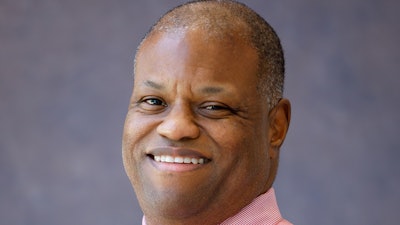What does Diverse: Issues In Higher Education mean to you? That might depend on what type of reader you are or your line of work.
When the first edition of what was then called Black Issues In Higher Education was published on March 15, 1984, it was two days before my 14th birthday, and I was still adjusting to ninth grade in a public high school after attending a private school from second grade to eight grade.
 Dr. George L. Daniels
Dr. George L. Daniels
Thanks to the foresight of co-founders Bill Cox and Frank L. Matthews in starting what was initially a monthly newsletter on Black Issues In Higher Education, we now know the power of pathways in helping Black boys like me go from being a nerdy high school student in Richmond, Virginia, to a tenured professor at a flagship state university where the governor once stood in the Schoolhouse Door. (“From Opening Doors to Opening Minds,” Aug. 14, 2003)
While there is no shortage of higher education news outlets, none has covered two-year and four-year colleges and universities and their efforts to promote equity and inclusivity quite like this one. Over the years, I’ve observed at least seven (7) best practices in Diverse: Issues In Higher Education that other media outlets might be well-served to emulate:
1. Celebrating those “On the Move.” There is something to be said about professional progress of scholars of color in each issue of this publication. It’s especially thrilling to see a variety of positions and institutions represented in this section of each semi-monthly edition.
2. Identifying up-and-coming scholars. One of the most anticipated annual issues each January is the Emerging Scholars edition that features outstanding scholars of color breaking new ground in research, applying scholarship to public policy and grooming the next generation of leaders and professionals. For example, Dr. Juan Gilbert, a 2002 Emerging Scholar, a decade later received the 2011 Presidential Award for Excellence in Science, Mathematics and Engineering Mentoring. (“White House Honoree, Jan. 5, 2012). A 2007 Emerging Scholar, Dr. Peniel Joseph (“Interpreting African-American Life and History,” Jan. 11, 2007), has now published his seventh book and moved into administration at The University of Texas at Austin. The most recent 2024 Emerging Scholars cohort now includes 15 up-and-coming academicians.
3. Acknowledging Top 100 Degree Producers. Considered the most widely read and important editions each year, the Top 100 degree producers editions showcase data from the Completions Survey of the Integrated Postsecondary Education Data Set (IPEDS) at the Department of Education’s National Center for Education Statistics. No other publication is offering this type of consistent snapshot that serves as a barometer of how we’re doing in diversifying our fields of study.
4. Captivating cover stories. In the magazine world, the most important feature is the cover story. Two decades ago, B. Denise Hawkins’ story on attorney Alvin O. Chambliss introduced me to Jackson State, Alcorn State, and Mississippi Valley State, all historically Black universities with a funding disparity between them and Mississippi’s other five public colleges/universities. (“Mississippi’s Crusading Gadfly,” Jan. 16, 2003)
5. Contextualizing culture in the day’s news. With its “noteworthy news” pages, Diverse reports the good and bad news that sometimes hits home. For example, Jamal Watson’s 2006 story about a lawsuit against the sponsors of a summer high school workshop I once attended was alarming. (“Lawsuit Blasts Minority Journalism Program As Exclusionary, Discriminatory,” Nov. 2, 2006)
6. Publishing work of journalists of color. I recently became acquainted with the work of Native American journalist Mary Annette Pember in her podcasting. Years ago, her work appeared in this publication via a story on the American Indian Science and Engineering Society (“Providing a Full Circle of Support,” March 6, 2008)
7. Remembering and rendering lives. While it might seem somber or sad to report on those who’ve passed on as Diverse does periodically with its In Memoriam page, it is important to celebrate the legacies of those in higher education who’ve paved the way for others to follow. Additionally, cover stories like the one on the late Dr. George Cooper and his work as executive director of the White House Initiative on HBCUs are ones to save. (“A Lifetime of Service,” Aug. 27, 2015)
On this publication’s 35th anniversary, co-founder Frank Matthews recalled how important it was for him and Cox as non-journalists to hire those to do the news gathering and production.
“Our mantra has been to be relevant, to be useful and to put out quality journalism,” Matthews told Jamal Watson, the executive editor, in a 2019 interview. “We never set out to be an advocacy magazine. We were always an informational magazine at least in our news reporting.” (See “A View from the Founders,” July 11, 2019)
To Mr. Matthews, I say — MISSION ACCOMPLISHED. But there’s still much more work to be done.
Happy 40th Birthday, Diverse!
Dr. George L. Daniels is an associate professor of journalism and creative media and Reese Phifer Fellow at The University of Alabama.






















